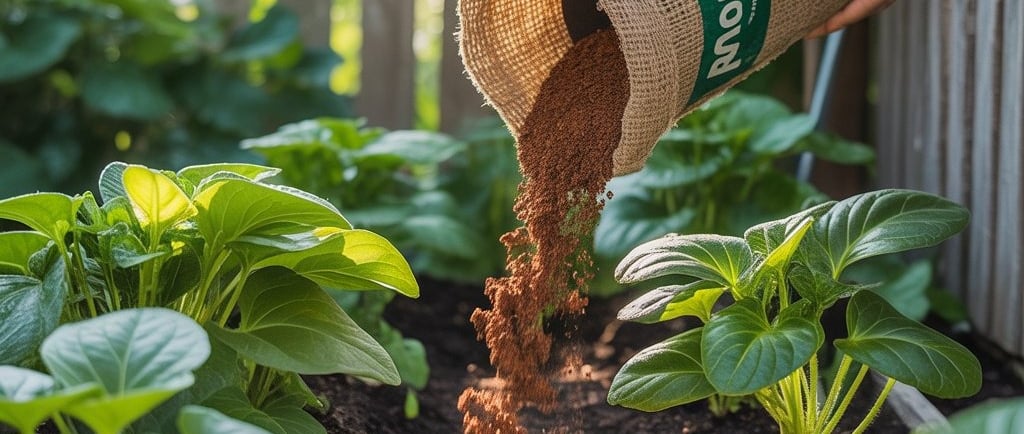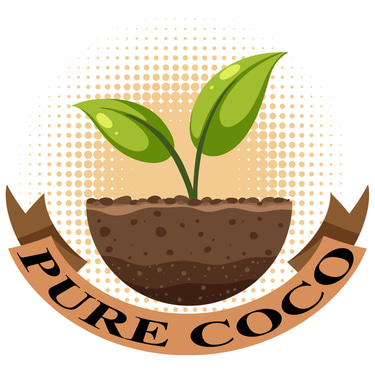Grow Green with Pure Coco Peat: Organic Gardening Made Easy
7/16/20255 min read


Introduction to Coco Peat
Coco peat, derived from the fibrous husks of coconuts, is emerging as a highly sustainable and eco-friendly growing medium for organic gardening. As the demand for environmentally responsible gardening solutions increases, coco peat has gained popularity among both amateur and professional horticulturists. Its origins can be traced back to tropical regions where coconuts are plentiful, primarily in countries like India, Sri Lanka, and the Philippines. The production process involves harvesting coconut husks, which are processed to extract the fibers and then broken down into smaller pieces, resulting in a spongy substrate ideal for plant growth.
One of the primary reasons for the growing appeal of coco peat is its exceptional ability to retain moisture. Unlike traditional soil, coco peat can hold onto water and slowly release it to plant roots, thereby reducing the frequency of watering needed. This characteristic makes it particularly beneficial in regions subject to drought or inconsistent rainfall, enabling gardens to thrive even under adverse conditions. Furthermore, coco peat supports aeration, which is crucial for healthy root development. The porous nature of this medium allows for sufficient airflow, preventing the risk of root rot while promoting a healthy balance of oxygen and moisture.
In addition to its moisture-retention and aeration properties, coco peat improves soil structure by providing essential nutrients and enhancing microbial activity. The organic composition of coco peat encourages the growth of beneficial bacteria, which can lead to improved nutrient availability for plants. As a result, gardeners who incorporate coco peat into their practices often notice increased growth rates and overall plant health. Given these advantages, it is clear that coco peat stands out as an innovative solution for organic gardening enthusiasts looking to adopt sustainable practices in their horticultural endeavors.
Benefits of Using Coco Peat in Organic Gardening
Coco peat, derived from the husk of coconuts, has gained significant attention in the realm of organic gardening due to its numerous advantages. One of the primary benefits is its natural pH balance, which typically ranges from 5.5 to 6.8. This slightly acidic condition is optimal for most plants, making coco peat an ideal medium for growth. Unlike traditional peat moss, which can vary in pH and often requires amendments to suit specific plants, coco peat provides a more stable environment right from the start.
In addition to its balanced pH, coco peat is free from pathogens, contributing to a healthy plant growth environment. This absence of harmful microorganisms reduces the risk of diseases that can adversely affect plant health. Gardeners have reported remarkable decreases in plant diseases when using coco peat, as it promotes a cleaner and more bioactive soil structure. The renewable nature of coco peat also sets it apart; unlike traditional peat moss, which takes thousands of years to form, coco peat is sustainably harvested, encouraging eco-friendly gardening practices.
Coco peat excels in nutrient retention, which is crucial for organic gardening. Its fibrous structure allows it to hold moisture and nutrients effectively, ensuring that plants have access to the necessary resources for growth. For instance, many organic gardeners have noted a significant improvement in plant health and growth rates when incorporating coco peat into their soil mix. Testimonials oftentimes highlight remarkable changes in plant vigor and yield, showcasing coco peat’s capability to enhance the garden's overall productivity.
Real-life examples underscore coco peat’s effectiveness as a soil amendment in organic gardening. Many users have successfully combined it with compost and other organic materials to create a rich growth medium that supports healthy plants. Overall, the benefits of coco peat in organic gardening arise from its natural characteristics, making it a highly recommended choice for both novice and seasoned gardeners.
How to Use Coco Peat Effectively
Coco peat, derived from the fibrous husk of the coconut, is an excellent organic medium for enhancing soil structure and moisture retention in various gardening setups. To utilize coco peat effectively, it is essential to follow specific preparation methods and guidelines tailored to different plant needs. A common first step is soaking the coco peat in water for several hours, which helps to hydrate it and remove any residual salts. Rinsing it thoroughly afterward ensures that the medium is adequately cleaned, making it suitable for plant growth.
When mixing coco peat with other soil amendments, it is crucial to consider the specific requirements of the plants being cultivated. A common mixing ratio is one part coco peat to two parts soil or compost, which provides a balanced environment that promotes healthy root development. For plants requiring more aeration, a mixture that includes perlite or vermiculite can enhance drainage and airflow. Different plants may benefit from unique ratios, so it is advisable to tailor the blend according to individual plant needs.
In the realm of indoor gardening, coco peat shines as an ideal medium for potted plants, providing excellent water retention while preventing root rot. When using coco peat for container gardening, ensure that pots have sufficient drainage holes. For seed starting, coco peat can create a perfect germination environment. Utilizing seed trays filled with moistened coco peat allows for optimal seedling growth due to its lightness and buoyancy. Overall, coco peat is versatile and can be adapted for various gardening methods, simplifying the organic gardening process while maximizing plant health.
Sustainable Practices and Future of Coco Peat in Gardening
Coco peat, derived from the fibrous husks of coconuts, has emerged as an essential element in organic gardening due to its sustainability and eco-friendly attributes. As we delve into the future of coco peat, it is crucial to emphasize the significance of sourcing it from reputable suppliers who engage in responsible harvesting practices. Sustainable coco peat production involves harvesting the material in a manner that does not deplete coconut palms and allows farmers to maintain economic viability while ensuring environmental integrity.
The sustainability of coco peat extends beyond its production; it serves as a versatile growing medium that enhances soil structure, retains moisture, and fosters nutrient availability. By incorporating coco peat into gardening practices, enthusiasts contribute to a circular economy that minimizes waste, as it is often produced as a byproduct of coconut processing. Its biodegradable nature further supports environmentally friendly practices, making coco peat a preferred choice among organic gardeners.
However, challenges loom on the horizon. The environmental impacts of coconut farming, including land use changes and biodiversity loss, necessitate a careful examination of the coconut industry. As demand for coco peat continues to rise, so does the potential for unsustainable practices to emerge. This highlights the need for continuous innovation within the industry to mitigate negative effects. Practices such as integrating regenerative agricultural techniques, promoting agroforestry, and implementing traceability measures can significantly enhance the sustainability of coco peat production.
In light of these considerations, the future of coco peat in gardening appears promising, provided stakeholders remain committed to responsible sourcing and sustainable practices. By prioritizing eco-friendly methods, gardeners not only contribute to personal environmental goals but also pave the way for a greener future. The synergy between coco peat and sustainable gardening could lead to significant advancements in organic horticulture, fostering a movement that values ecological balance and resource conservation.
Pure Coco
Explore our range of coco peat products today.
Support
Contact
info@purecoco.com
+91-9015762289
© 2025. All rights reserved.
Support
